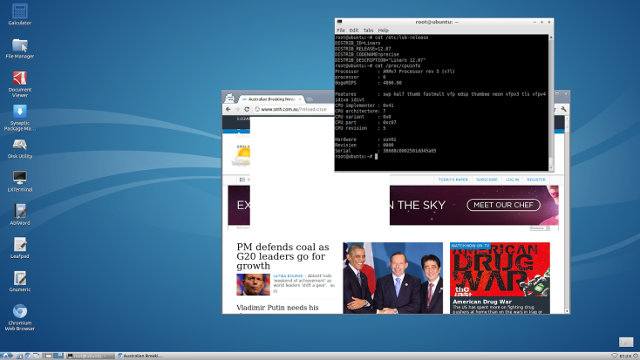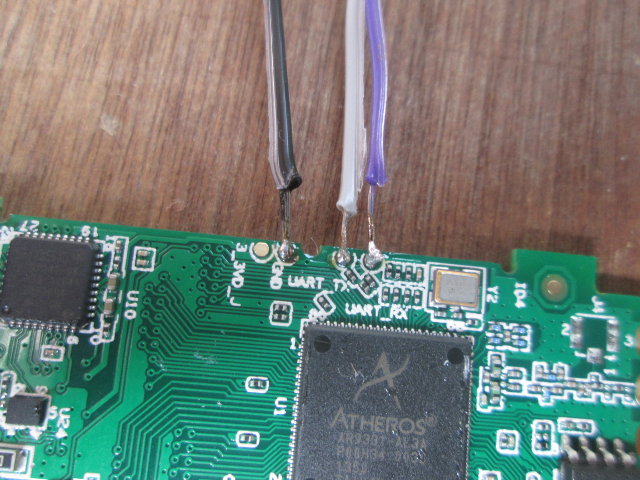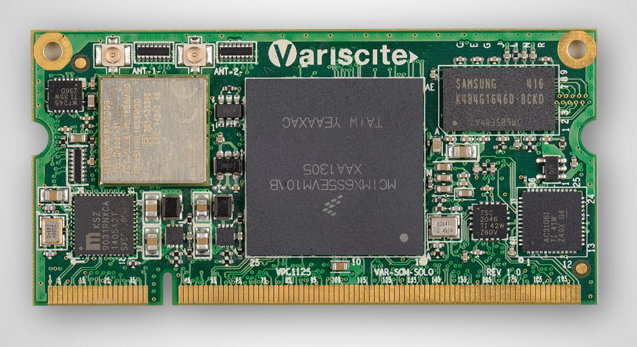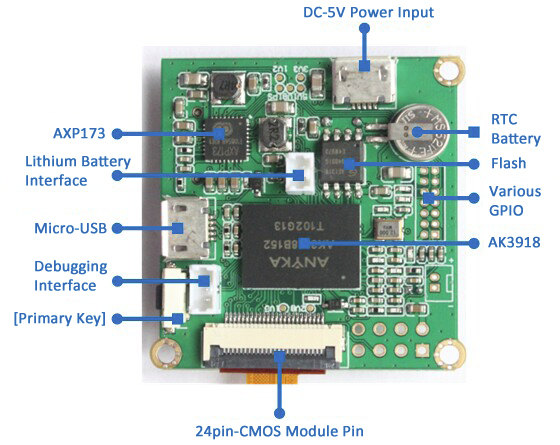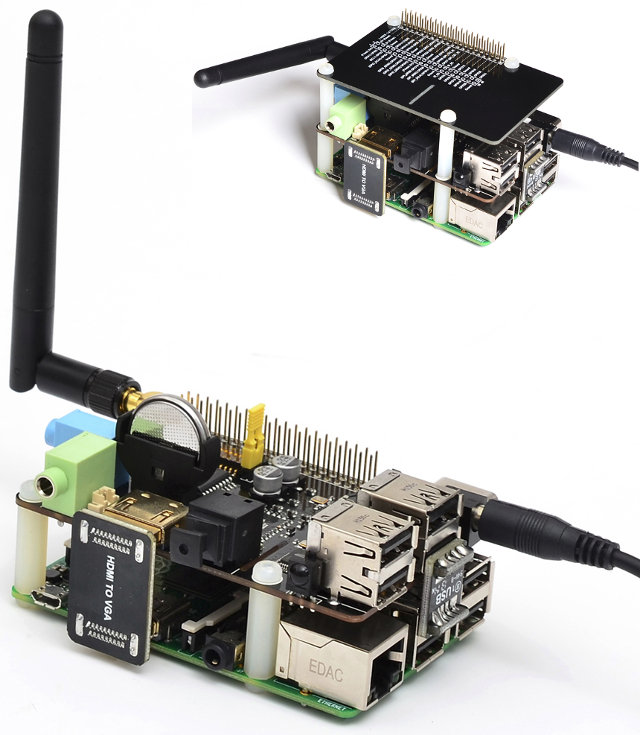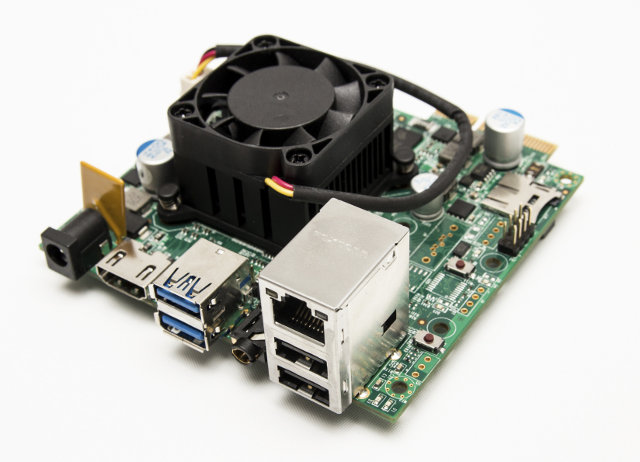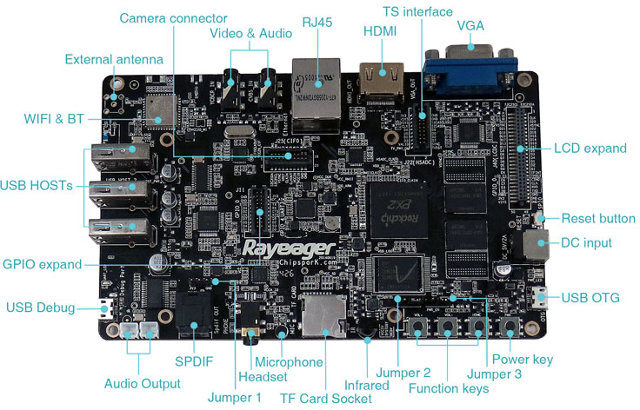Last month, pcDuino released Android 4.4 and Ubuntu images for pcDuino8 board powered by Allwinner A80 octa core processor, and since it’s the same board layout as A80 OptimusBoard, I decided to try it out, but it failed as the update script would try to flash it to a partition that’s too small for the root file systems. But last week, Ian Morrison and Minidodes gave it another try, and successfully booted Ubuntu, or more exactly Lubuntu, on A80 OptimusBoard. Both their screenshot reports sun9i platform in /proc/cpuinfo, so that’s definitely Allwinner A80, but only one core is shown. I’m not sure if it’s because the other are idled and don’t show, or for some reasons, the kernel only supports one core at this stage. Anyway, here’s how they did to install Lubuntu: Flash the kernel (pcduino8_kernel_livesuit_20141008.img) with PhoenixCard or Livesuit first. See instructions to use Livesuit with A80 OptimusBoard. […]
Zsun SD111 Is Now “Officially” an Hackable Wireless Flash Drive
Zsun SD11x are Wi-Fi flash drives for 8 to 128 GB eMMC, alternative to Sandisk or Kingston. Yesterday, I soldered the UART pins to Zsun SD111 (8GB) flash drive to access the serial console, but I did not manage to enter the terminal as it was password-protected. I posted my results anyway, as I was convinced I would get some clever ideas from my readers, some of which appeared to be a little time consuming, but Zoobab offered a simple solution that consisted in changing the boot parameters, by replacing /sbin/init by /bin/sh. The first step is to interrupt the boot by pressing space or another key, in order to access U-boot. Now we can check the U-boot environment ar7240> printenv bootargs=console=ttyS0,115200 root=31:02 rootfstype=jffs2 rw init=/sbin/init mtdparts=ar7240-nor0:64k(u-boot),64k(u-boot-env),6720k(rootfs),1216k(uImage),64k(NVRAM),64k(ART) bootcmd=bootm 0x9f6B0000 bootdelay=4 baudrate=115200 ethaddr=0x00:0xaa:0xbb:0xcc:0xdd:0xee ipaddr=10.168.168.1 serverip=10.168.168.10 stdin=serial stdout=serial stderr=serial ethact=eth0 Environment size: 361/65532 bytes Let’s keep everything the same, except the init, […]
Avionic Design to Introduce Embedded Nvidia Tegra K1 Processor Module
Avionic Design, a German company specializing in the development and production of electronic components for the embedded, avionics, and healthcare market, has been working on an Nvidia Tegra K1 system-on-module (SoM) , using the quad core version of the processor, with 2GB RAM, and 16GB eMMC, putting most features found in Jetson TK1 development board into a 70×50 mm module. Nvidia Tegra K1 CPU module specifications: SoC – Nvidia Tegra K1 quad core Cortex A15 processor up to 2.2 GHz with Nvidia Kepler GPU with 192 cores up to 450 MHz System Memory – 2 GB DDR3 (1833 MHz) Storage – 16GB eMMC + SATA & SD/MMC via SoM connectors Interfaces: Video In – 2x 4-lane CSI Video Out – HDMI 1.4b, eDP, two 4-lane DSI Audio – 2x I2S, S/PDIF In and Out High Speed I/O PCIe 2.0 1x, PCIe 2.0 4x 2x USB 3.0, 2x USB 2.0 host, […]
Variscite VAR-SOM-SOLO is a Tiny System-on-Module Based on Freescale i.MX6 Solo Processor
Freescale will soon announce i.MX6 SoloX dual core processor with ARM Cortex A9 and M4 cores, and dual-port gigabit Ethernet, but companies still design and manufacture new Freescale i.MX6 Solo/Dual/Quad based hardware for their mostly industrial customers. Variscite has recently launched a smaller version of their VAR-SOM-MX6 system-on-module called VAR-SOM-SOLO powerd by Freescale i.MX6 Solo processor with up to 1GB RAM, up to 512MB NAND flash for boot code, up to 64GB eMMC flash for storage, and TI WiLink8 module with Wi-Fi and Bluetooth Smart. Variscite VAR-SOM-SOLO technical specifications: SoC – Freescale i.MX6 single core ARM Cortex-A9 core @ 1.0GHz with Vivante GC 880 + Vivante GC 320 GPU, and VPU supporting 1080p30 H.264 encode and decode. System Memory – 256MB to 1GB DDR3 RAM Storage – 128MB to 512MB NAND flash for boot code, 4GB to 64GB eMMC flash, and SD/MMC via edge connector Video Output / Display Interfaces: […]
Linux based BPI D1 HD Camera Module Features Anyka AK3918 ARM9 Processor
SinoVoIP BPI-D1 is a tiny 720p30 camera module running Linux, and powered by Anyka AK3918 ARM9 processor. It’s a standalone module that can be powered by micro USB (5V), or an external Lithium battery, and it also includes various GPIOs, a micro USB interface, a micro SD slot to boot Linux, optional Wi-Fi connectivity, and more.. BPI D1 specifications: Processor – Anyka AK3918 ARM926EJ processor @ 400 MHz System Memory – 64MB DDR2 Storage – 16 MB SPI Flash + micro SD flash up to 32GB. Camera: CMOS Image Sensor 720p @ 30fps, visible light with 940 nm two-way infrared lens filter, with infrared night vision function Lens – M7*P0.35 EFL=3.0mm/F.NO=2.8/View Angle=60° Video Recording – H.264 / AVI hardware encoding at 720p 30fps for up to 120 hours of video data on a 32GB micro SD card Audio Formats – MP3/WMA/AAC Audio Input – Microphone Connectivity – 802.11 b/g/n (AP […]
Suptronics X200 Raspberry Pi Model B+ Expansion Board Adds Wi-Fi, RTC, VGA, optical S/PDIF, USB ports, Servo Support, and More
The Raspberry Pi is a nice little board, but in some cases you may want to add some extra ports. Suptronics released the X100 expansion board for Raspberry Pi Model B last year, and they’ve now come up with a little monster called X200 expansion board for Raspberry Pi Model B+ which adds Wi-Fi, a real-time clock + battery, a VGA port, optical S/PDIF output, 3.5 mm mic and audio jack, servo support (ULN2803), and a few USB ports to the low cost board. Key features of X200 expansion board: Input Voltage – 6V to 21Vdc converted to 5V, 3A via step-down DC/DC converter to power the Raspberry Pi. VGA output – HDMI to VGA converter supporting up to UXGA (1600×1200) and 1080p with 10-bit DAC Audio – 3.5mm MIC in jack, 3.5mm stereo audio jack, S/PDIF output, audio I/O connector (Microphone input and stereo audio amplifier 3.3Wx2) Connectivity – […]
$199 Gizmo 2 Development Board Powered by AMD G-Series GX210HA SoC
There are only a few Intel / AMD x86 embedded development boards on the market, at least for the hobbyist market, namely MinnowBoard MAX based on Intel E3815 or E3825 processors, and Gizmophere Explorer Kit powered by AMD G-Series GT-40E dual core APU + A55E hub controller. Gizmosphere, a non-profit organization, had now released a new version of their embedded board called Gizmo 2 powered by AMD G-Series GX210HA SoC combining a dual core x86 processor, a Radeon GPU, and peripherals. Gizmo 2 development board specifications: SoC – AMD Embedded G-Series GX210HA SOC with a dual core “Jaguar” processor @ 1.0 GHz and a Radeon 8210E GPU @ 300 MHz with support for DirectX 11.1, OpenGL 4.2x and OpenCL 1.2. 153 GFLOPS of performance. 9W TDP. System Memory – 1GB DDR3-1600 SDRAM Storage – mSATA/mini PCIe Connector + micro SD card slot Video Output – HDMI Audio I/O – HDMI and […]
Rayeager PX2 Development Board Features Rockchip PX2 Dual Core Cortex A9 Processor
Rockchip has apparently discreetly released a PX2 SoC with a dual core Cortex A9 processor @ 1.4 GHz coupled with a Mali-400MP4 GPU, that on the surface looks extremely similar to their RK3066 SoC. Unfortunately, at first, I could not find much details about the processor itself, but Chipspark have introduced Rayeager PX2 development board based on the new Rockchip processor, with 1 to 2 GB RAM, an 8GB eMMC flash, and various ports including a SATA 2.0 interface. Rayeager PX2 specifications: SoC – Rockchip PX2 dual core Cortex A9 @ 1.4 GHz with Mali-400 MP4 GPU System Memory – 1 to 2 GB DDR3@400MHz Storage – 8 GB eMMC flash, micro SD slot, and SATA 2.0 interface for 2.5″ and 3.5″ hard drives (the latter may require external power supply) Video Output – HDMI, and VGA up to 1080p, , and LCD interface Video Input – 1x CVBS input […]


